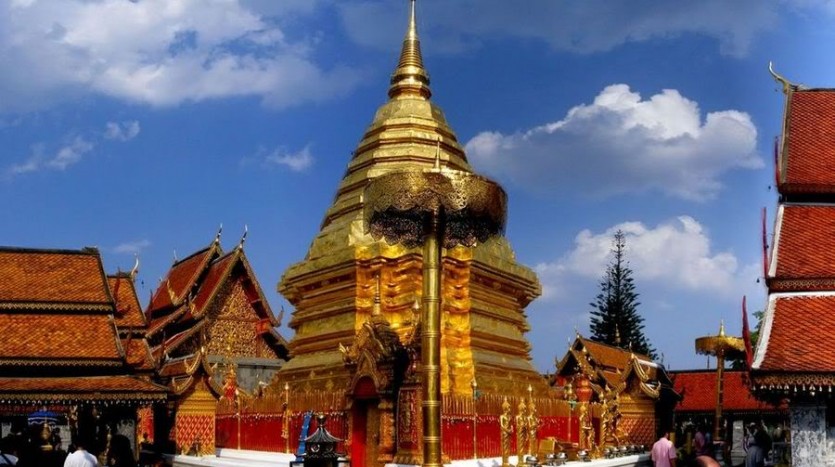Chiang Mai Thailand
Chiang Mai, Thailand
An old city of 700 years is the land of warm hospitality and gentle manners, land of mystique mist-shrouded mountain scenery, land of historic temples, and land of arts and handicrafts. Although Chiang Mai is Thailand’s 2nd largest city with population 150,000, its area is only one-fortieth the size of Bangkok’s metropolitan area. Much of the actions take place in the limited area between the Ping River and the eastern canal of the old city where most of the temples, handicraft shops, hotels, and restaurants are located and all within an area of less than four square miles in its center, just east of Tape Gate, especially around Charoen Prathet and Chang Klan roads.
Chiang Mai is ranked by Asia week Magazine as ninth most livable city in Asia, using indicators including average life expectancy, medical services, air pollution, average monthly housing rent, unemployment rate, parks and green area, and crime rate. Chiang Mai has international feel and charm of a small city, the spicy northern Thai cuisine is delicious, the people are enterprising and friendly, multitude of fascinating things to see and do, and the shopping is amazing.
Homes, condominiums, townhouses, and shops are scattered about in the old city and spread out in every direction. One of the most scenic drives in Chiang Mai area is through Mae Sa Valley, a recently developed area that starts with a left turn at Mae Rim, about 4 kilometers out of Chiang Mai on the road to Fang. There are rustic cottages that attract city-dwellers who want a taste of country life without the usual discomforts. The most fashionable residential area as well as the site of several new hotels and Chiang Mai University is along Huay Kaew Road leading to Doi Suthep, the low mountain, 1676 meters high, that overlooks the city, providing a picturesque backdrop for this fast-developing center.
There are move to preserve the city’s character. Conservation measures include a ban on the building of any high-rise construction within 93 meters of a temple, thereby protecting 87% of all land within municipal limit. This 1991 law is designed to halt any future apartment developments along the Ping River in order to preserve the city’s skyline.
Not all the foreigners around Chiang Mai are tourist. Many live in Chiang Mai part-time or all year round. Chiang Mai residents enjoy living environment that has all the cultural advantages of being in Bangkok but fewer disadvantages of traffic jams and air quality. Another advantage is that the city is small enough to get around by bicycle and these days, there are more and more cultural and spiritual learning experiences available as well. Popular classes on offers are Thai massage, Thai cooking, Thai language, meditation, and yoga.
Chiang Mai is handicraft capital of Thailand. Each of the prolific crafts seems to have its own section of the city; but a good place to get a glimpse of the entire range of crafted goods is at the exciting night bazaar on Chang Klan Road. Before dusk, hundreds of vendors begin opening up their stalls or setting up on the sidewalks, and the hill tribe people come into the city to sell their crafts. Most of the local specialties are here: woodcrafts, lacquer ware, silverware, antiques, sausages, fruits, and fancy clothes.
Chiang Mai not only celebrates more festivals than anywhere else in Thailand but it does so with an enthusiasm that attracts tourists and native participants from all over the country. Exact dates of the festivals may vary from year to year since some celebrations are based on the lunar calendar and beauty contests are an essential element of any festival large or small; and most of the time, the fun goes on for several days.
Chiang Mai has a slow rhythm of relaxed and easy-going manner of a small-city charm, unchanged for hundreds of years, but with endless of shops all over the city, there will be no shortage of perfect places to pick up elaborate decorations to feather your Chiang Mai favorite perch (home or condominium) if you are settling in long-term.

